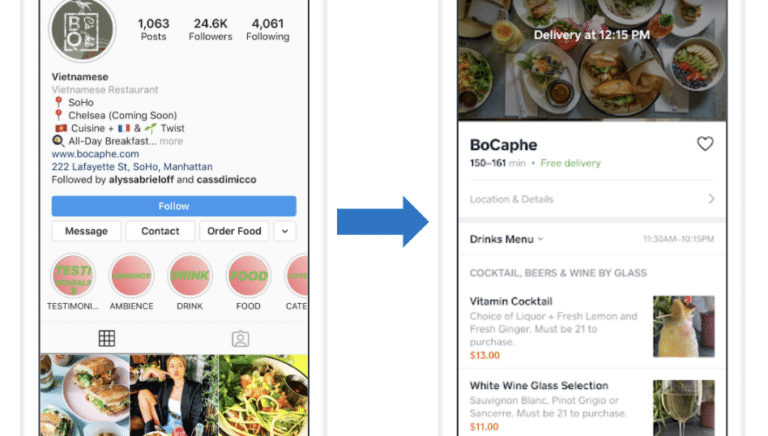During this challenging time, brands that learn to adapt quickly to changing consumer behaviors will ultimately thrive. By thinking outside of the box and inventing new ways to engage with users, brands are better able to address customer pain points, which ultimately allows them to increase retention rates in a time where churn is increasingly common. Here are some ways lifestyle and delivery brands are pushing boundaries during this difficult time, and how you can do the same:
1. Take a Cross-Platform Approach
In this digital age, users expect to receive a seamless experience across platforms. This is especially true today, as customers staying home during this time are spending more time with brands across multiple channels and devices than ever before. Cross-platform users spend 2.2x more than single-platform users, meaning that if you haven’t seized this opportunity, you should start.
Consider this example from lifestyle and retail brand Under Armour: With e-commerce sales slowing, the company is instead encouraging customers to practice healthy fitness habits while staying home. To do this, they send multiple newsletter emails throughout the week such as “The Daily 3” to increase user engagement. Within the newsletter, deferred deep links powered by Branch drive users from email to the right content in-app. This seamless experience allows Under Armour to engage with their users through daily content while driving relevant discovery of their fitness app. Plus, they are maximizing the value of their email campaigns and app to app features — app users are 3x more likely to engage and convert than mobile web users.
To help people stay connected with their favorite local restaurants, Instagram has partnered with various food delivery apps on a cross-platform feature that enables users to place delivery orders right from a restaurant’s Instagram page or story. In the example below, the restaurant BoCaphe uses the “Order Food” Instagram Action Button on its Instagram profile to bring users to the BoCaphe page within the food delivery app Caviar for users to place a delivery purchase. Like the previous example above, this type of discovery is achieved through deep linking.
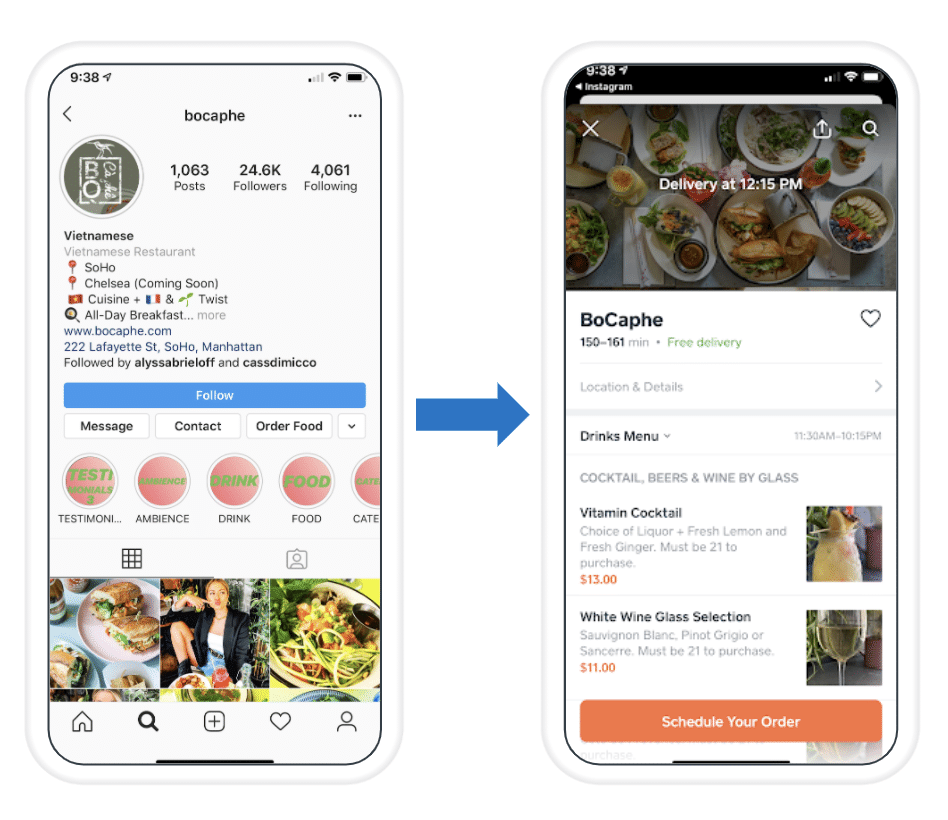
The restaurant BoCaphe’s Instagram profile links to its page in a delivery app for users to place an order.
Instagram additionally allows for other buttons and stickers on brands’ profiles and stories that let users buy gift cards and donate to fundraisers. This cross-platform technique not only drives discovery and engagement, but also provides users with a positive, seamless experience that makes them want to come back for more.
2. Drive Organic Engagement With Referral Programs and Incentives
Referrals drive higher conversions — according to Branch’s 2019 Mobile Growth Handbook, people are 4x more likely to buy when referred by a friend. Consider offering referral bonuses or free delivery to acquire new users and re-engage with existing users. Delivery apps like Seamless and Drizzly are offering double-sided incentives, where users can give friends $5 to try the app, and get $5 in return when the referred user places an order.
To implement a successful referral program, it’s vital to ensure your referrals send users to the right in-app content when they click the referral link. The last thing you want is to offer an incentive to a user only to have them drop off because of a broken experience. By enabling personalized, contextual sharing powered by Branch deep links, you’re more likely to acquire loyal app users and preserve your existing ones.
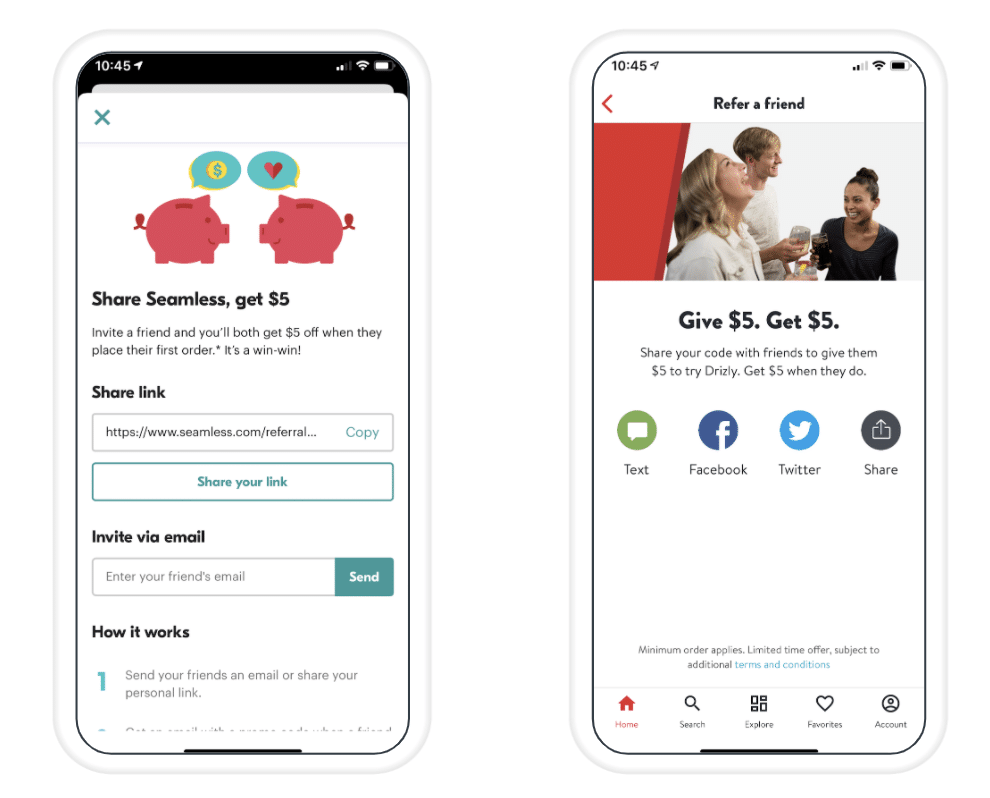
The Seamless and Drizly referral programs give users $5 when friends use a referral link to place an order within the app.
Brands like Grubhub and Postmates incentivize app engagement by offering free delivery for local restaurants for limited amounts of time throughout the day. Postmates in particular prompts users to “Join the Party” and order from a list of restaurants that are popular right now for free delivery.
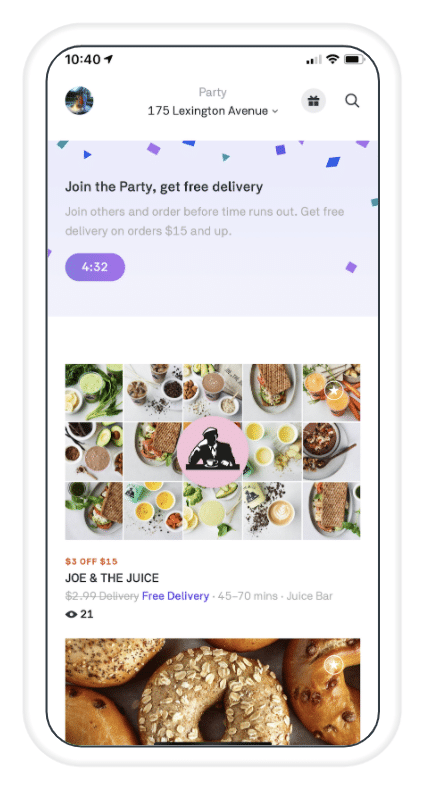
The Postmates app features restaurants offering free delivery while prompting users to order.
Ultimately, it’s more important than ever to connect with your customers during this time. By putting customers first and focusing on long term goals vs. short term gains, brands will grow customer loyalty and increase retention, leading to higher customer lifetime value.
3. Provide Personalized Experiences Through Relevant and Engaging Content
How are brands shifting their user retention strategies now that user acquisition is no longer the main goal? Many are improving their content promotion and personalization techniques. With ad spend cut or on hold, creating new and engaging content is a cost-effective method to delight current users while driving organic traffic. Meanwhile, creating personalized in-app experiences that are tailored to each customer leads to an increase in sales and decreases churn — Instapage reports that marketers see an average increase of 20% in sales when using personalized experiences.
To help beat cabin fever, brands like Yummly are constantly creating new content for their users to drive engagement and increase app discovery. By collecting key information on food preferences and restrictions during the onboarding experience, Yummly is able to curate content for the user to provide them with personalized cuisine recommendations. The result: happy users who are more likely to convert.

Yummly personalizes the user’s in-app experience by collecting food preferences during onboarding.
4. Convert Your Offline Shoppers to Online Customers
For brands that have had to shut doors due to COVID, now is the perfect time to bring your offline users online. By providing a positive first-time user experience to new online users, you can continue to increase user retention and engagement.
For example, Branch customer Peet’s Coffee took this approach to its COVID-19 campaign strategy. Because they can no longer operate at the same capacity or allow customers to dine in, Peet’s Coffee placed a poster with a QR code powered by Branch on the doors of all 200 locations that encourages customers to download the app to order ahead. Customers who don’t order ahead see a sticker on their Peet’s coffee cup asking them to consider downloading the app before their next visit. This move not only considers user needs and pain points (waiting in line), it also soothes limited staff bandwidth and allows users to discover the Peet’s app. The result? Keeping existing customers satisfied while growing their app user base.
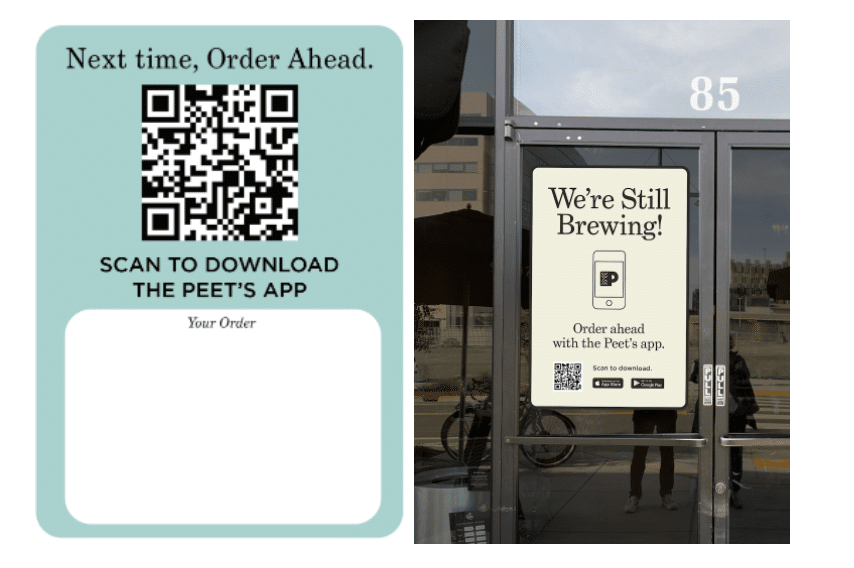
A sticker on the Peet’s coffee cup prompting users to scan the QR code to download the app, and a poster with the same QR code on the doors of Peet’s locations.
With consumer behavior rapidly shifting online, brands have the opportunity to foster strong relationships and build customer loyalty with their users during these challenging times. To implement innovative strategies, maximize your marketing efficiency, and increase customer LTV — be sure to work with a partner like Branch.

